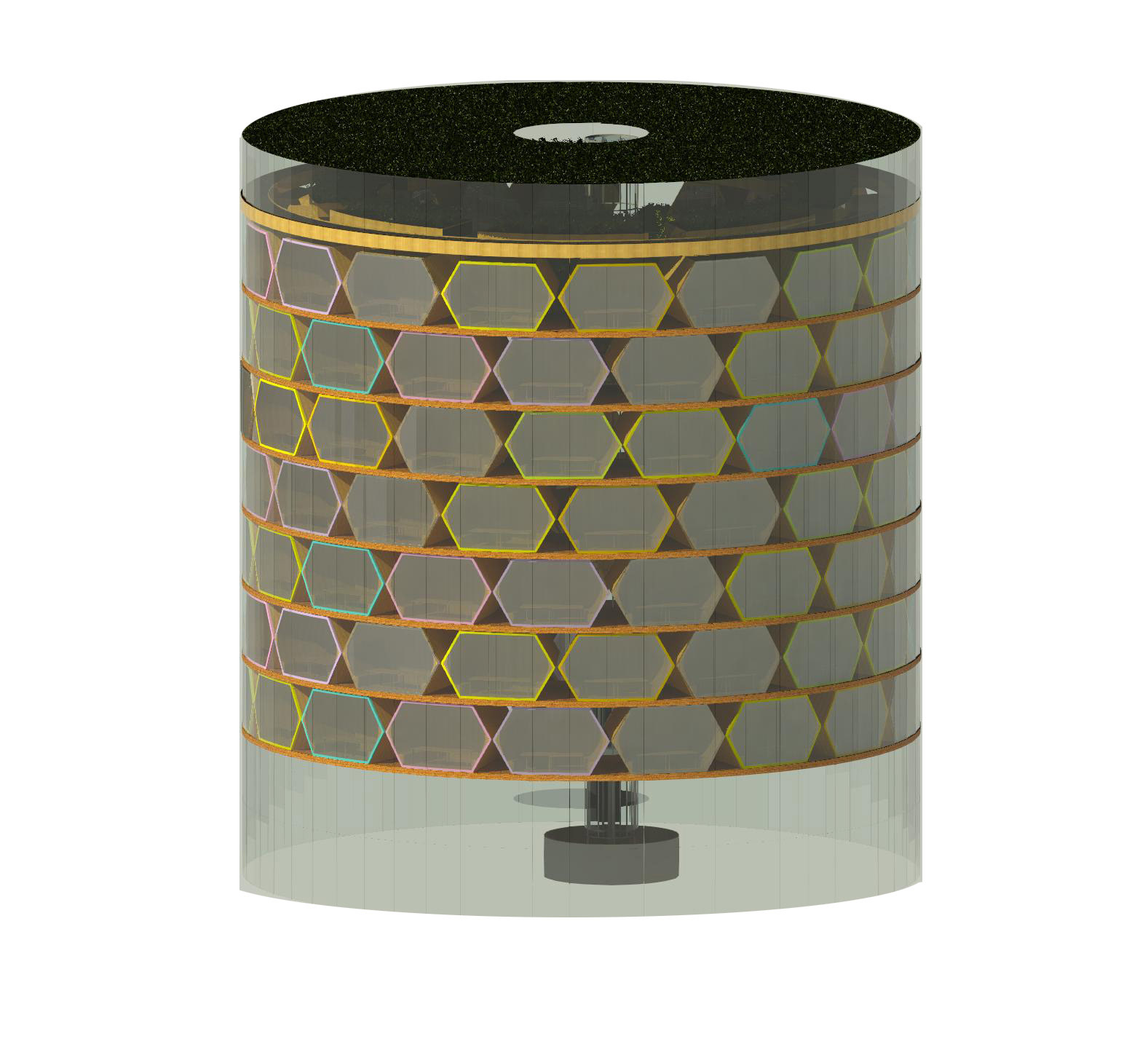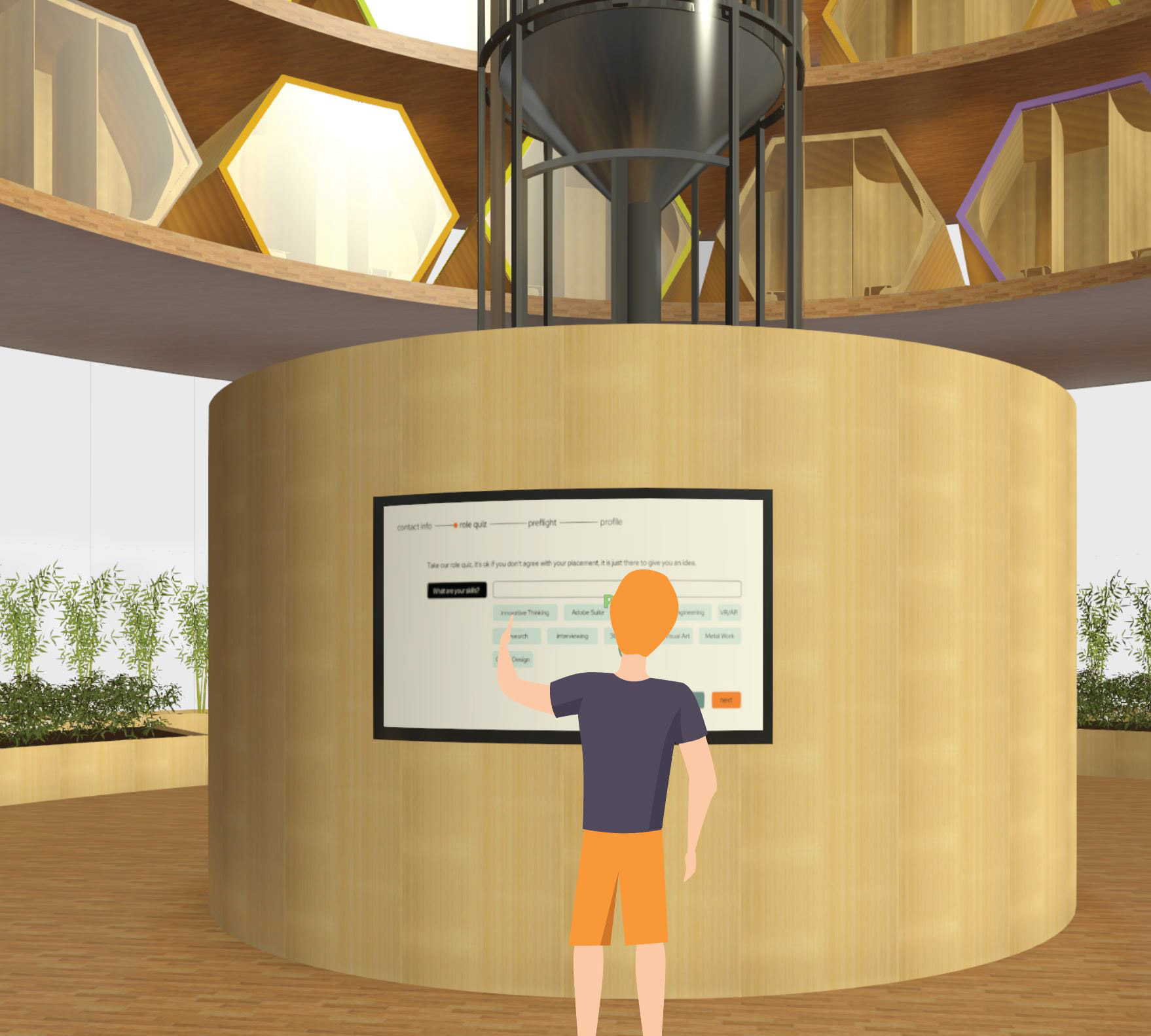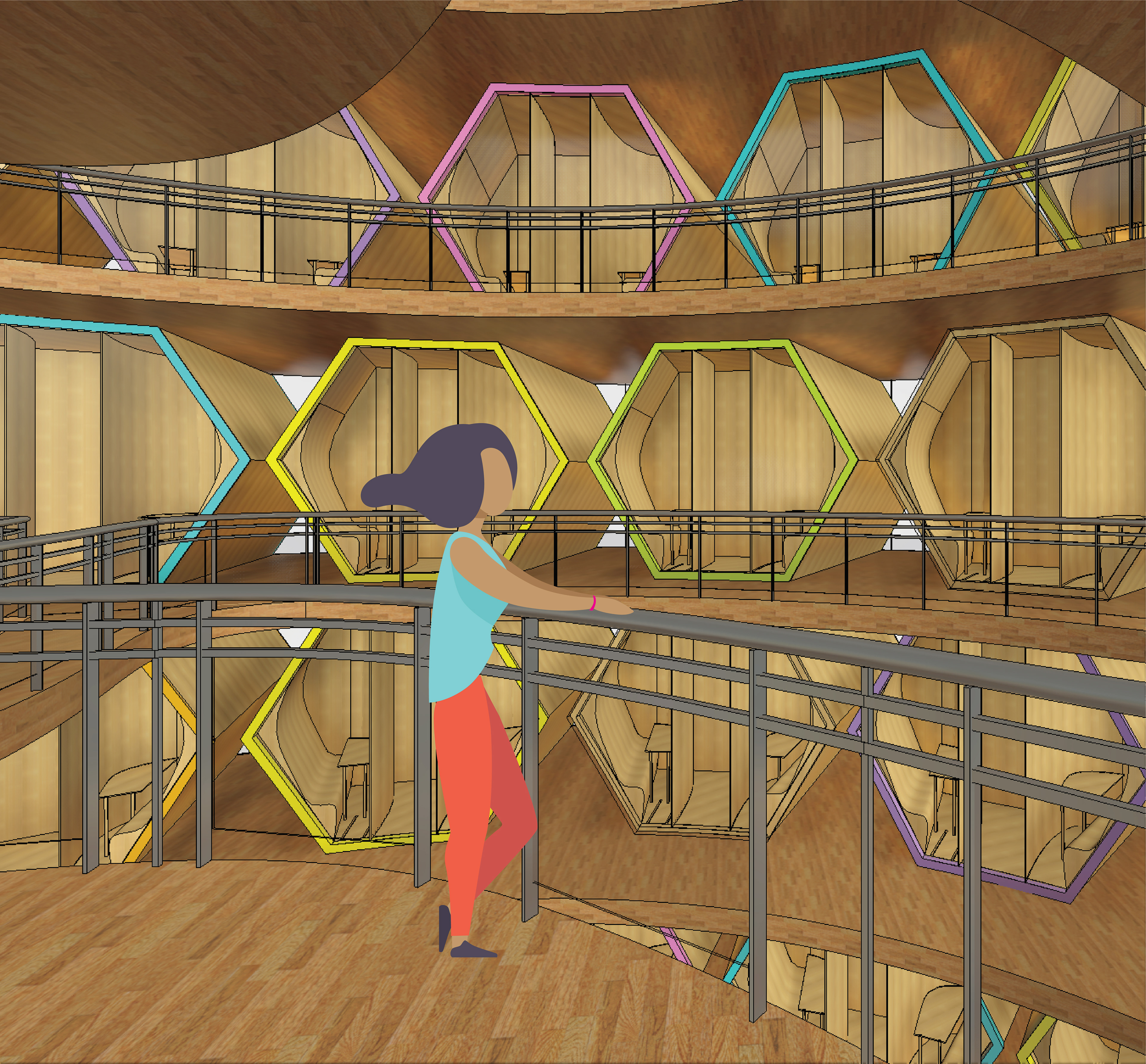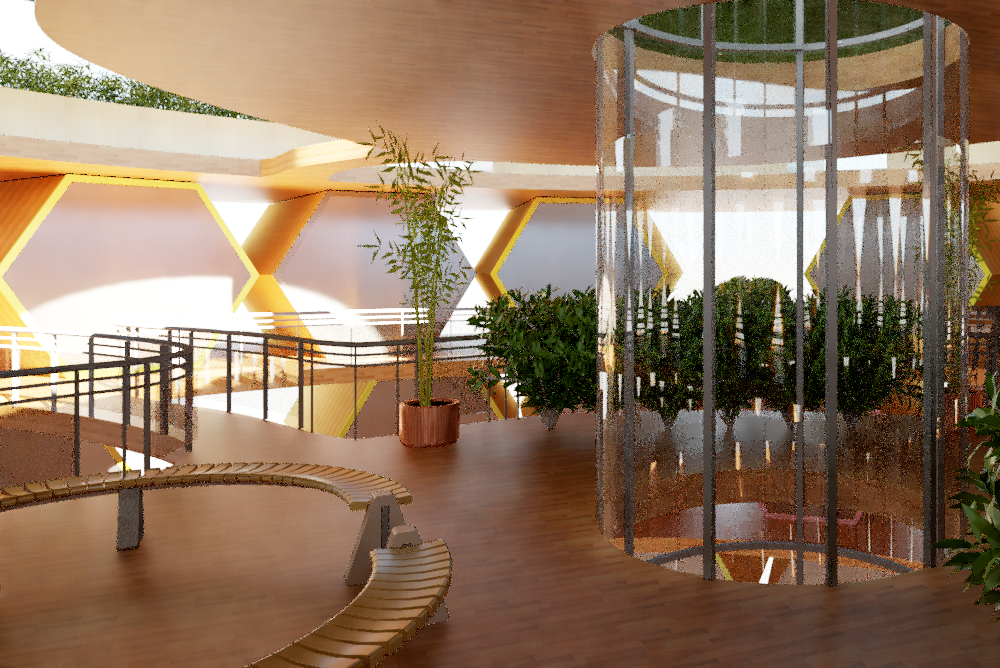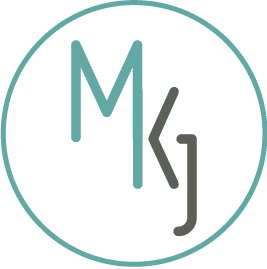Team
Our MADE studio was split into 4-person teams to tackle different challenges based on current technological and societal trends. Our team, including Isabel Arango, Mark Araujo, Kat Maddox, and me, focused on the future of work.
Role
While we researched and ideated as a team, I was responsible for designing and rendering the speculative physical space (Fusion 360 and Revit).
Challenge
How can we foster collaboration among students of diverse backgrounds, majors, and expertise both through physical space interventions and digital interventions?
research
Before starting our own ideation, we wanted to understand how others have tried to tackle this in the past. We gained inspiration and lessons from Google's cutting edge (and sometimes a bit over-the-top) workspace design, Deloite's Future of Work reports, Gensler's The Future Workplace trends report, and many more. With an understanding of the elements becoming more and more commonplace, we knew the limits beyond which our speculative design had to reach.
ideation
Using Miro as a collaborative tool, we as team members went through a methodical, cooperative, and creative ideation process, starting with a simple "How might we..." exercise, shown to the right. We then brainstormed more deeply around the physical space, trying to understand what components worked together to create a collaborative environment, and we created a systems map to visualize these relationships, shown on the left below. To get creativity flowing, we then did a "Make it Weird" exercise, thinking about what the space could look like in a fantasy world without the bounds of physics or reality, shown to the right below.
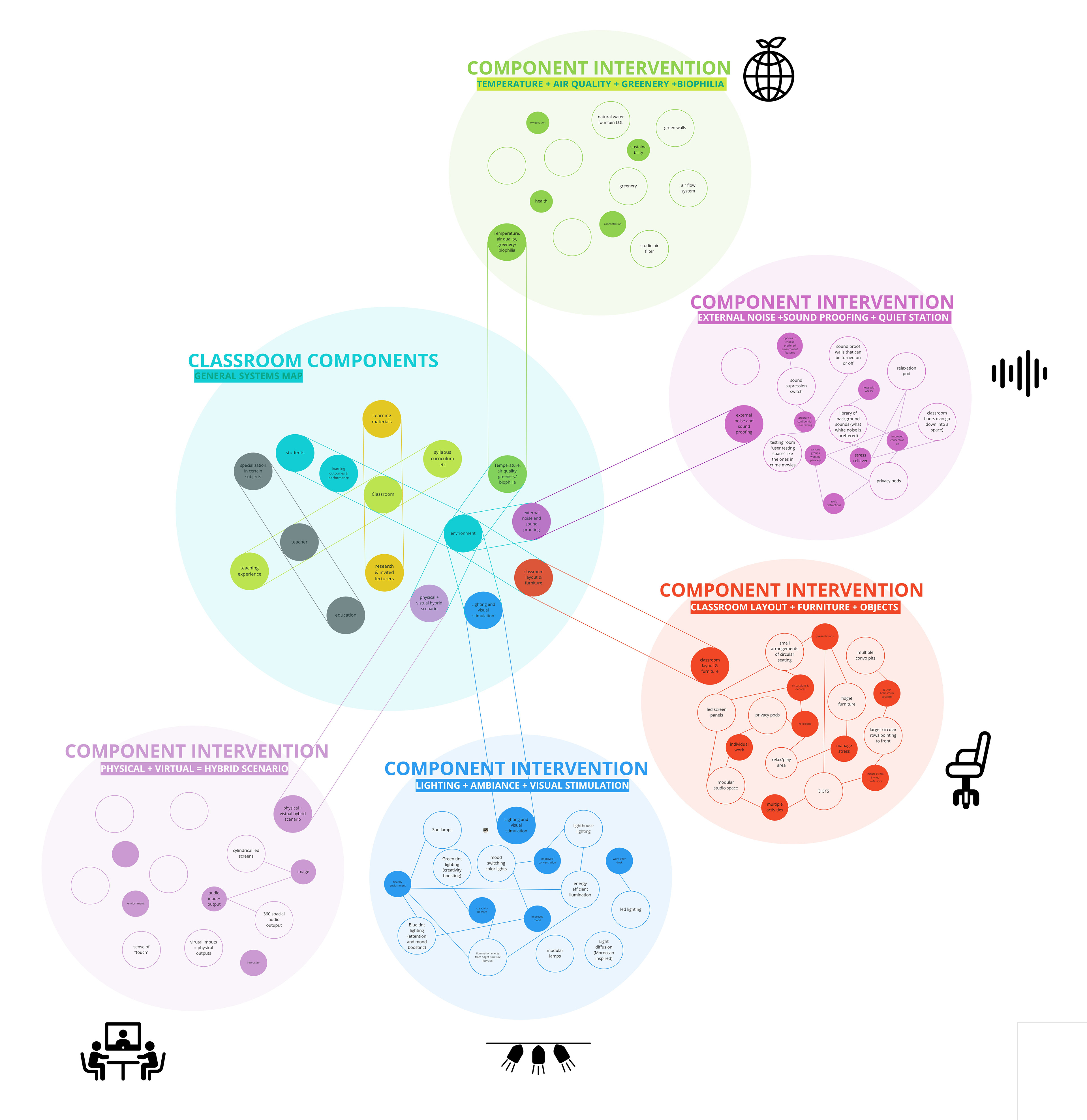
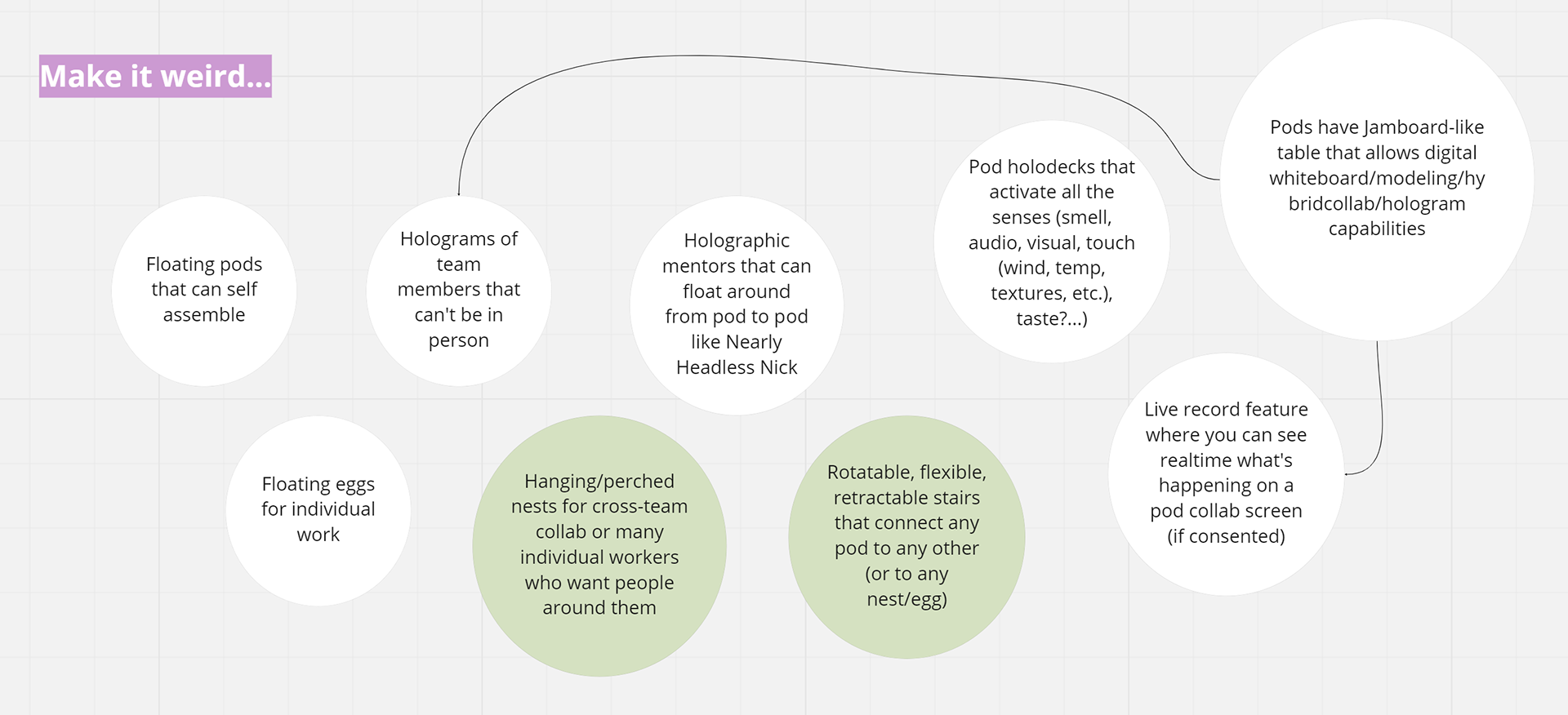
final output
Our deliverable was a set of complementary design proposals, one for a speculative physical space and one for a digital platform. The physical space, as shown below, is a building proposed for a site between Brown University and Rhode Island School of Design to maximize accessibility for students of all backgrounds that is made up of working pods surrounding central working spaces. The building, however, is not static. It takes an active role in increasing collaboration by guiding students to team pods that are looking for people with their backgrounds, mandating break times spent in the central working areas to increase cross-team discussion, and a clear indication of when teams are working vs. open to collaboration. Our digital platform (wireframes shown to the left) allows teams to create a profile as well as individuals looking to join teams and suggests individuals to teams and vice versa based on their skills, experience, interests, and desired level of investment in the project. We believe that a systems solution like this one could increase crossdisciplinary collaboration, bolster the capacity of both academic and entrepreneurial projects, and lead to more innovation across campuses.
